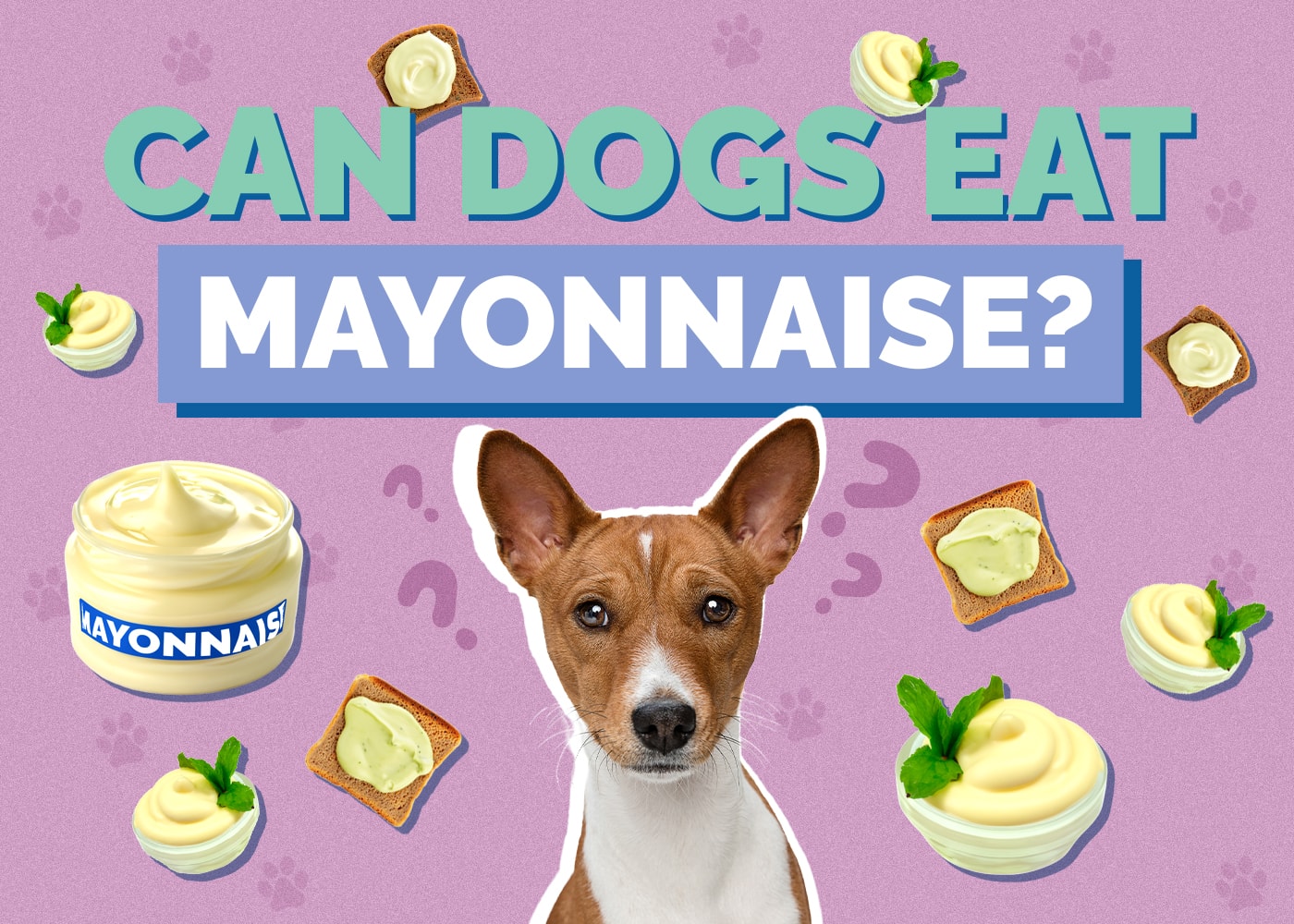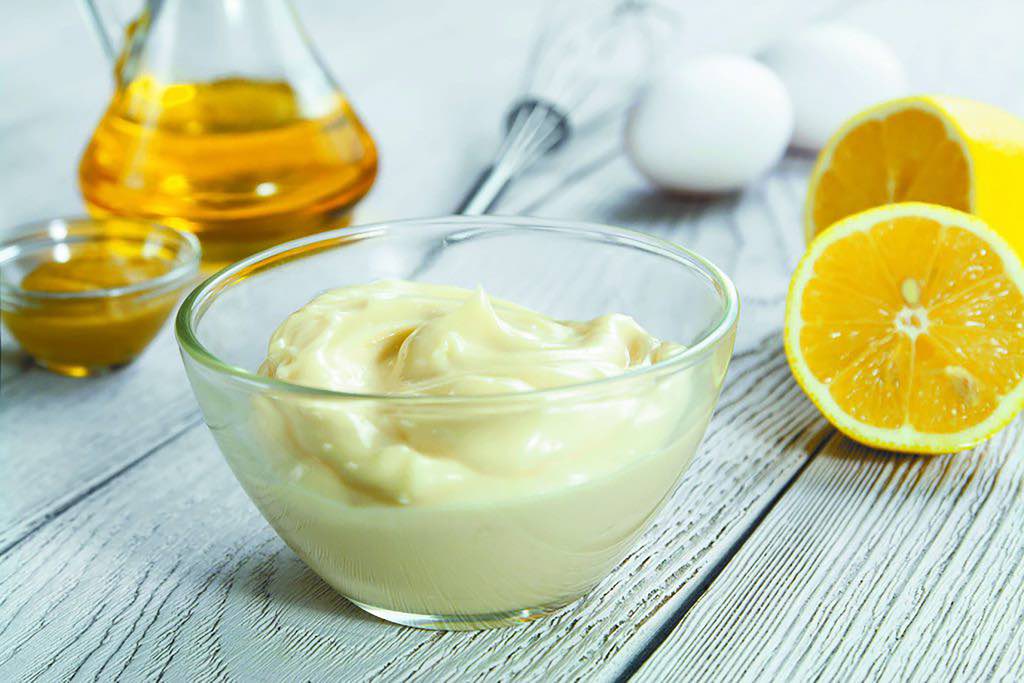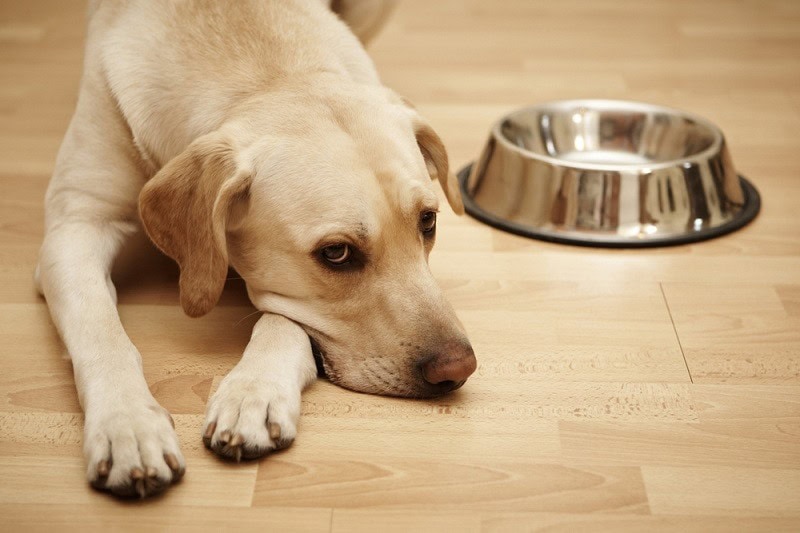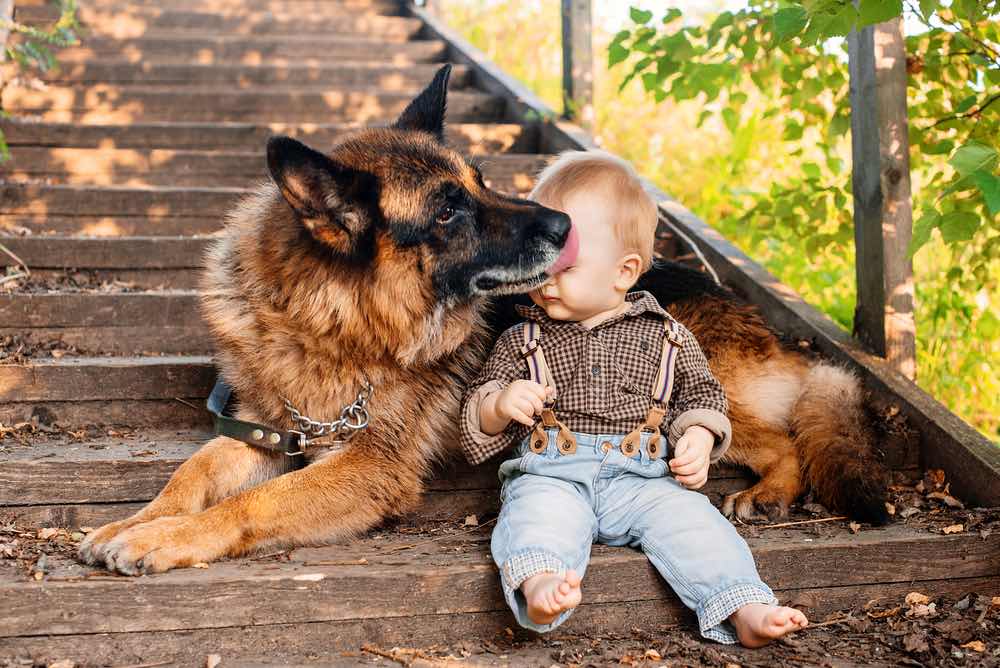Can Dogs Have Mayonnaise? Vet Approved Facts & FAQ

Updated on

Mayonnaise is one of the most versatile condiments around. It’s popular around the world for use in all sorts of cuisines and makes a great secret ingredient in many different dishes— but that’s for us humans.
What about our four-legged friends? Can dogs eat mayo?
Simply put, regular mayonnaise is not toxic for dogs, but that doesn’t necessarily mean they should eat it. It has no health benefits and is very rich in fat and additives, which can make your dog quite ill.
If your pup happens to snag a piece of your sandwich that’s been dressed with mayo, nothing terrible is going to happen. With an amount that small, there’ll be little to no adverse side effects. Well, maybe some extra potent gas if their belly doesn’t agree. But that’s about it.
You really only need to be concerned if they manage to eat more or if you’re feeding them mayo as a topper on their food — something we don’t recommend doing. We’ll walk you through the dos and don’ts of mayonnaise when it comes to your pooch.
What Makes Mayo Unhealthy for Dogs to Eat?
Mayonnaise is unhealthy for dogs in the same way that it’s not a healthy food for us. It’s super rich in fat.
Mayonnaise is essentially the emulsification of egg yolks, salt, and oil. All of these ingredients can contribute to digestion issues all on their own. But when put together, they form a delicious gut-bomb ready to rip through your insides.
Dogs that eat an excessive amount of mayo are prone to indigestion, vomiting, and diarrhea.
Homemade mayo can also pose a risk of Salmonella poisoning if the eggs are contaminated and undercooked or added raw.1

How Much Fat Can Dogs Eat?
Some people are still convinced that certain dog breeds are just walking garbage trucks eating everything that sits still for long enough. This most certainly leads to obesity, stomach upsets, and other accompanying health issues, one of which may also be pancreatitis or inflammation of the pancreas.
Many of these overeating ailments are a direct result of ingesting too much fat. However, fats are an important part of your dog’s health and well-being. The concept of “too much of a good thing” holds absolutely true. So, how much fat can dogs actually eat?
An adult dog should have approximately 14 grams of fat per day for roughly every 30 pounds of body weight. So, if we were to compare that to mayo, how much could they eat per day?
Well, on average, a single tablespoon of mayo contains 10 grams of fat. This means that a small dog would reach their daily fat limit with just a single spoonful! And this isn’t even including the fat that’s in their food.
So, even though Fido might like the taste, you should still refrain from feeding them any mayo based on this information alone.

Hidden Killers in Mayo
Mayonnaise isn’t always just a simple sauce. At times, it can be rather complex, incorporating many different ingredients and flavors. And perhaps the most popular flavor added to mayo is garlic.
While regular mayo is relatively harmless to your pup in small quantities, adding garlic to the mix can start to make the mixture toxic. Garlic and other members of the onion family contain chemical compounds known as thiosulfates and disulfides that are highly toxic to dogs depending on the amounts. So, be sure to keep your pooch away from mayo that has been seasoned with anything relating to garlic.
What to Do When Your Dog Has Eaten Too Much Fat
If you feel that you have started to incorporate too much fat into your dog’s diet, it’s not too late to correct the issue. You can always consult with your vet and swap over to great low-fat dog food. But remember, fat content and requirements in food vary a lot, depending on the age, health, and level of activity of your dog, and should not be changed without consulting a professional, either a canine nutritionist or a vet, as lack of fat in the diet is also not good.
There are so many different great options to choose from. We recommend picking up something like Evanger’s Low Fat Vegetarian Dinner Canned Dog Food or Wellness CORE Grain-Free Reduced Fat Dry Dog Food as a kibble option. These are great, healthy choices if you’re looking to boost your pup’s health.
However, there may be times when an at-home switch just isn’t enough. If your dog is becoming overly obese, experiencing any signs of indigestion or vomiting, or is in perpetual lethargy, contact your vet. Your vet will examine your dog and establish the cause of these signs, and if required, will recommend and prescribe a special veterinary diet in order to help your pooch feel better.
Just keep in mind that these special diets require a prescription to purchase and are often much more expensive than normal food. So, it’s best to try and maintain your dog’s diet as best you can without veterinary intervention.

Conclusion
Letting your dog have a quick taste of mayo isn’t going to do any real immediate damage. But letting them eat more—especially over time—can definitely take a toll on them. It’s best just to avoid it altogether. Instead, you can offer your pup treats specially designed for canines while keeping all the tasty sauce to yourself.
See also:
Featured Image Credit: Africa Studio, Shutterstock












